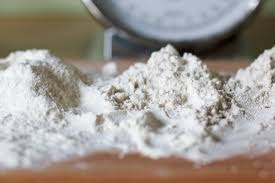
Organic Powders by Très Spa Unique & Exquisite
Of course we’re going to say that our Organic Dusting Powders are exceptional, but they really are exceptional in their category and here’s why.
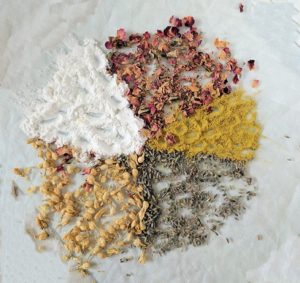 Like any producer, the uniqueness is in the formulation and blend of the final product. At Très Spa we take great pride in carefully selecting each one of the ingredients. We don’t rush into a final product without taking the time to do the homework first. We carefully evaluate how each piece will shape the whole formula, how it will affect your skin care, and how it will impact the planet (we are an Eco-Friendly and Cruelty Free company).
Like any producer, the uniqueness is in the formulation and blend of the final product. At Très Spa we take great pride in carefully selecting each one of the ingredients. We don’t rush into a final product without taking the time to do the homework first. We carefully evaluate how each piece will shape the whole formula, how it will affect your skin care, and how it will impact the planet (we are an Eco-Friendly and Cruelty Free company).
You Need To Have Your Own Vision
Most people take a look at someone else who is doing “it”–whatever it is you want to achieve. We don’t for several reasons.
- Just because someone else is doing it doesn’t mean they have it right or have the best way.
- If we follow someone else then why the heck are we even bothering being in business?!
- We’ll just end up a carbon copy or a cheap imitation of someone else’s creation.
- At Très Spa we march to our own drummer. After all, you don’t pay us to be like everyone else, you pay us to be exceptional and unique and yes, different.
Change Your Perspective
When we approach a formulation, like our organic powders, we look at it from the desired result. Why and how would a person want to use a powder? Is organic powder important vs non-organic powder? Then we look at the long list of plants out there that we use to feed ourselves. You see, we think of skin care as a topical application of nourishment. You are feeding your skin just like you would feed your internal organs, your body. Naturally, you feed your external protective cover, your largest organ of all, your skin! Call it simple, but last time we checked the best nourishment was from food we grow not from a synthesized compound created in a lab or from things buried deep in the earth’s core. Don’t get me started on gold flecks in skin care! Seriously people!
Once we get a short list of possible options, we start to play and experiment with each one individually and then as a blended unit. You see, not every plant powder is the same. They all have unique strengths and behaviors just like all of us. When we blend them, we want to play to each one’s strength to create a formula that is exceptional as a whole. There is an abundance of possibilities! Even though we may finalize a formula for the moment, we may go back and modify it down the road. One should never be afraid to adjust along the journey.
Test and Retest and Then Test Some More
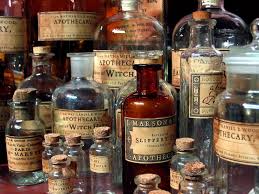 When the final list of ingredients is finalized and the blend is perfected, it is time to apply environmental testing. This is where the rubber hits the road. You actually have to use it in real-life scenarios and gather feedback on various performance matrices and observable data. For some, we may set up lab tests like the Three Powder Experiment. For what we cannot do in the lab or with the assistance of our immediate circle of friends, we extend the invitation out to the Très Spa extended circle of friends, the Très Spa customers. They are, by far, the most exceptional group of people and they are the best testers ever. They are never afraid to give candid feedback and are generous with their personal thoughts. In fact, there are many occasions these experts have helped shape our products!
When the final list of ingredients is finalized and the blend is perfected, it is time to apply environmental testing. This is where the rubber hits the road. You actually have to use it in real-life scenarios and gather feedback on various performance matrices and observable data. For some, we may set up lab tests like the Three Powder Experiment. For what we cannot do in the lab or with the assistance of our immediate circle of friends, we extend the invitation out to the Très Spa extended circle of friends, the Très Spa customers. They are, by far, the most exceptional group of people and they are the best testers ever. They are never afraid to give candid feedback and are generous with their personal thoughts. In fact, there are many occasions these experts have helped shape our products!
Exceptional People Make Exceptional Products
We can confidently state that Très Spa Organic Dusting Powders are magnificently exceptional, because Très Spa customers are truly magnificently exceptional and they helped shape them for you. Before we started selling the Organic Powder, we had lots of candid input from people just like you.
Often times, when we want to create a new item or design a new synergy blend, we like to get input from others. No one lives on an island of isolation so we reach out to our community. We usually send out a special request for volunteers in our subscriber community. They get free stuff and we get great feedback. We use blind surveys so it is unbiased and people can share candidly. It works great for everyone. They get their “hands in” on the design from ingredients to scent and even to the packaging!
We hope you enjoy using them as much as we enjoyed making them for you!

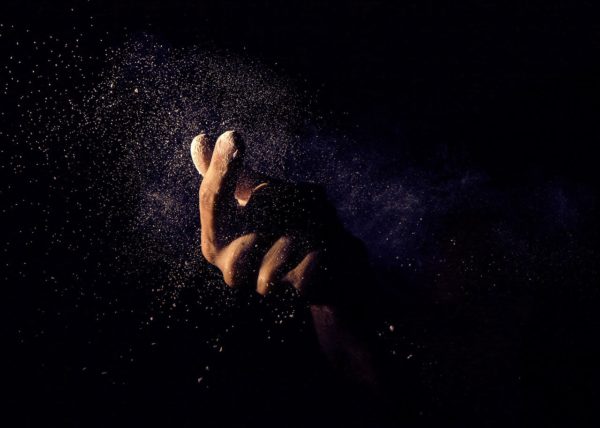
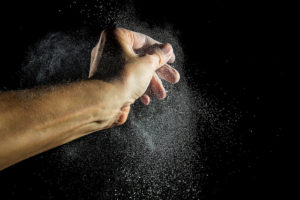 What are the uses for body powder or dusting powder
What are the uses for body powder or dusting powder My first introduction to powder
My first introduction to powder
 If you lift weights, you know you do not want your skin to catch and pinch on the bar. You need a smooth slick surface or you run the risk of ripping your skin. Chalk is a type of powder. You could say it is powder in cake form. Typically, it is also talc powder, so if that concerns you, I suggest you pack your own body powder. An obvious choice would be Très Spa’s
If you lift weights, you know you do not want your skin to catch and pinch on the bar. You need a smooth slick surface or you run the risk of ripping your skin. Chalk is a type of powder. You could say it is powder in cake form. Typically, it is also talc powder, so if that concerns you, I suggest you pack your own body powder. An obvious choice would be Très Spa’s 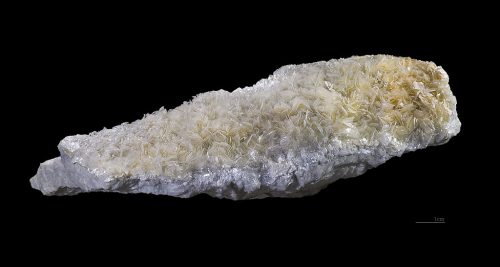
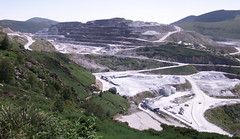 Mineral deposits are rarely pure. There is usually some cross-contamination from other deposits and minerals seeping over. For example, many of the talc veins run very close to asbestos, a known carcinogen. Now, not all veins do and there is pure talc, you just need to trust that the suppliers have properly processed and tested the purity. Call me a cynic, but I think this might be problematic.
Mineral deposits are rarely pure. There is usually some cross-contamination from other deposits and minerals seeping over. For example, many of the talc veins run very close to asbestos, a known carcinogen. Now, not all veins do and there is pure talc, you just need to trust that the suppliers have properly processed and tested the purity. Call me a cynic, but I think this might be problematic.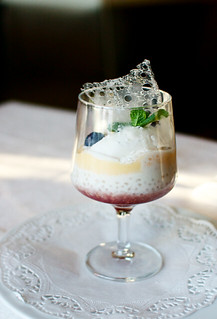 Naturally designed for living organisms
Naturally designed for living organisms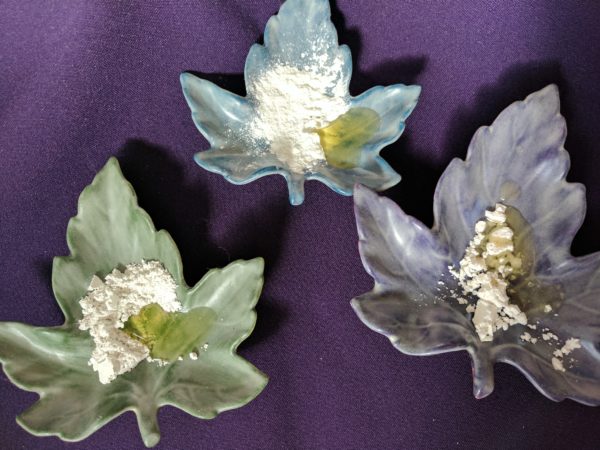

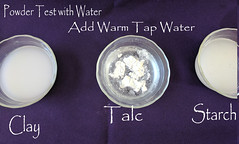
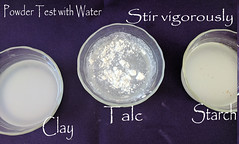
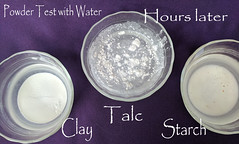

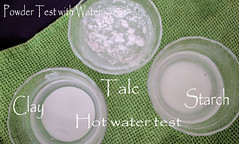
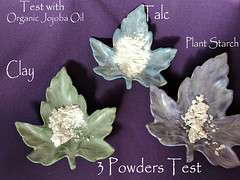
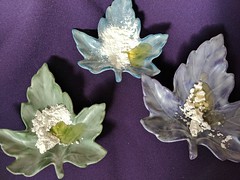
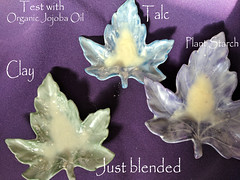

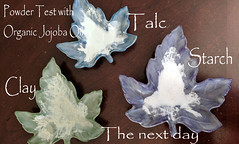
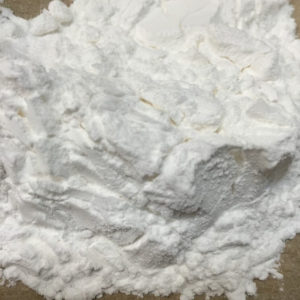 The whole purpose of any powder is to cover the skin with a light silky coating. The goal is to create a protective layer and to wick water away from the surface. This is how powders work no matter what their chemical structure is. But they don’t all work exactly the same and some of them have some pretty big caution flags for personal care use.
The whole purpose of any powder is to cover the skin with a light silky coating. The goal is to create a protective layer and to wick water away from the surface. This is how powders work no matter what their chemical structure is. But they don’t all work exactly the same and some of them have some pretty big caution flags for personal care use.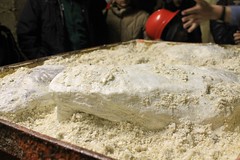 Traditionally, powders were made with mined minerals or clays. The most common mined mineral is Talc and you can find the use far and wide from industrial to pharmaceutical to cosmetic. Talc is hydrated magnesium silicate, a very fine substance and rates only a 1 on the MOHS scale of hardness for minerals. That means it is so soft you can actually flake it with your finger nail. It can be found in veins all over the globe and was formed hydrothermal alteration of magnesium-rich magmatic rocks. The mines are plentiful and it’s fairly cheap raw material. It also has a shelf life of eternity. All those factors make it very appealing for manufacturing. Unfortunately, it is usually found near asbestos veins as well but not always so not all talc contains trace amounts of asbestos. And recently there have been a few lawsuits citing Talc as a leading cause of cervical cancer. There are also some studies that link pulmonary disease with talc which has caused many pediatricians to recommend against using it for children.
Traditionally, powders were made with mined minerals or clays. The most common mined mineral is Talc and you can find the use far and wide from industrial to pharmaceutical to cosmetic. Talc is hydrated magnesium silicate, a very fine substance and rates only a 1 on the MOHS scale of hardness for minerals. That means it is so soft you can actually flake it with your finger nail. It can be found in veins all over the globe and was formed hydrothermal alteration of magnesium-rich magmatic rocks. The mines are plentiful and it’s fairly cheap raw material. It also has a shelf life of eternity. All those factors make it very appealing for manufacturing. Unfortunately, it is usually found near asbestos veins as well but not always so not all talc contains trace amounts of asbestos. And recently there have been a few lawsuits citing Talc as a leading cause of cervical cancer. There are also some studies that link pulmonary disease with talc which has caused many pediatricians to recommend against using it for children.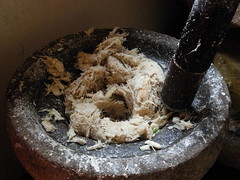 More recent in the skin care world and less common are powders made entirely from plant starches. Personally I think it’s pretty fantastic how starch is made. Plant sources for starch powder can be anything from tuberous plants to seeded ones. The most common plants are corn, wheat, and rice as a seed version. Less common would be coconut, beans and peas. Arrowroot, potato, and tapioca are all examples of starchy tuber plants. You can read more about how the starches we use in Très Spa formulations are created:
More recent in the skin care world and less common are powders made entirely from plant starches. Personally I think it’s pretty fantastic how starch is made. Plant sources for starch powder can be anything from tuberous plants to seeded ones. The most common plants are corn, wheat, and rice as a seed version. Less common would be coconut, beans and peas. Arrowroot, potato, and tapioca are all examples of starchy tuber plants. You can read more about how the starches we use in Très Spa formulations are created: